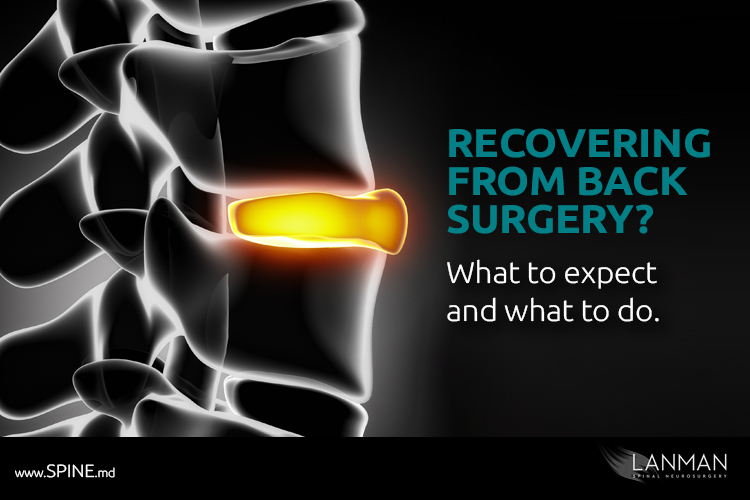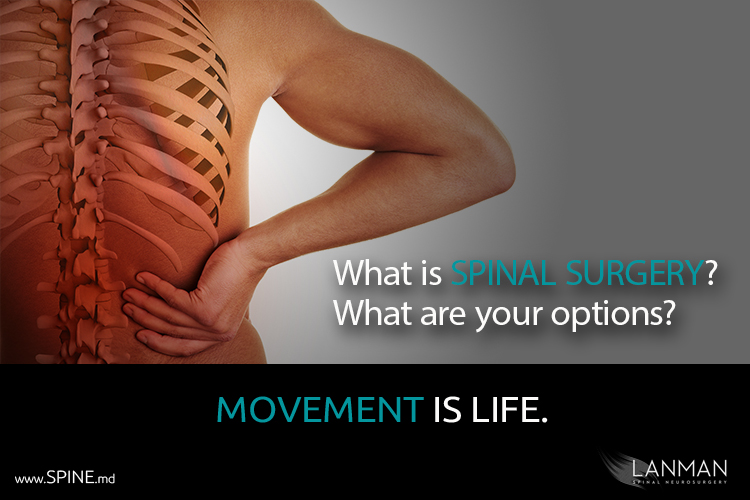What to expect and what to do to help your full recovery.
Recovery from a surgical procedure that involves the spine depends on how much the surgeon has to resolve the pathology: the extent of spinal disorder that requires medical help. Your recovery is also dependent upon the type of surgery performed: laminectomy, discectomy, spinal fusion, or artificial disc replacement. There are other procedures, but these are the most common. Each procedure varies in terms of how they affect the body in post-op. To limit the scope of this article, I’m using the discussion points that I often have with patients who see me at my private practice in Beverly Hills, CA.
Common disorders of the spine that can be treated by these surgical procedures include degenerative disc disease (herniated disc), spinal stenosis, and spondylolisthesis.
I assess the age and physical condition of the patient as essential factors that may determine how long the patient will experience post-op discomfort. A patient who is in their 30s will generally see a shorter period of post-op discomfort than one who is in their 60s. It’s not always the case, but it is more common.
Most patients go home after their surgeries with less pain than they had, but that does not mean they will have no pain at all. There will be tenderness around the location of the surgery. It is easy to irritate nerves during procedures, which may trigger a spike in pain. However, most pain will dissipate within a few days of the procedure. If it does not, contact your surgeon.
The healing process after surgery can take anywhere from 3-4 weeks to up to a full year. Spinal fusion is an invasive surgery. It requires the most healing time; on average, 3 months, but healing can take up to 6 months before the patient may return to normal routines. As a comparison, total disc replacement, which is also an invasive surgery, often requires about 3 weeks to 3 months before the patient can go back to normal activities.
Medical technology has advanced all spinal surgeries. Laminectomies (which often includes foraminotomy) and discectomies, are usually minimally invasive and performed with advanced surgical optical tools. These newer tools allow surgeons to perform these procedures on an outpatient basis. What that means is that, after a few hours of post-op observation, the patient is free to go home. Recovery may be as little as 2 weeks of home rest.
Below are specific experiences for specific surgical procedures.
Recovery from Laminectomy, Foraminotomy
Patients diagnosed with spinal stenosis have progressive pain localized at or near the spine. They have numbness in their arms and fingers or legs and toes. The diagnosis may say “spinal stenosis” to describe a narrowing of the nerve channels (otherwise known as the “foramen”). Laminectomies/foraminotomies are performed on the vertebrae bone itself. Medical technological advancements like micro-surgery allow many surgeons to conduct this procedure on an outpatient basis. The procedure may take 1-2 hours to complete. Post-op recovery may include a week or two with at home rest. Your doctor may also recommend 1-2 months of limitations with no lifting of objects greater than 10lbs (2 kg), no bending, and stooping. Recovery therapy may include strengthening exercises but seek your doctor’s advice regarding specific sports activities.
Recovery from Discectomy
Back and neck pain are often associated with damage to a spinal disc (e.g., disc degeneration, herniated disc, degenerative disc disease). You may have experienced persistent numbness and tingling in your arms and legs. After a thorough examination with MRI or CT scans, I may recommend a ‘partial discectomy’ to remove fragmented disc material to relieve pressure on any nerves. Like laminectomy, this procedure can be aided by micro-endoscopy tools. The surgery may take about 1 to 2 hours, and the patient goes home after a short period (an hour or two) of observation. Post-op healing starts with soreness at the site of the procedure with about 1 week of home recovery. The patient can often return to routine daily affairs within about a month.
Recovery from Spinal Fusion
Symptoms that may lead to a recommendation for spinal fusion are the same for discectomies and laminectomies. Spinal fusion is among the oldest surgical procedures still performed today. Instead of opening up space for nerves (laminectomy) or removing fragments of discs (partial discectomy), spinal fusion stabilizes the joint “level” between two vertebrae by stopping all flex motion. The surgeon implants steel rods to “tie” the two vertebrae together and remove all disc material between the bones (total discectomy). In place of the disc, the surgeon will insert a bone graft or other grafting tool to cause vertebrae to grow into one bone. Developed in the 1950s, this surgical procedure is often recommended for patients where there is no other viable therapy (severe sublimation, joint instability, advanced arthritis, advanced osteoporosis). Spinal fusion is considered a major invasive surgical procedure. Even with the help of the most advanced medical technique and technology, spinal fusion may take from 2 to 6 hours. Post-op healing will require about 1-2 months of bed rest with an additional 6 to 12 months of time-off recovery.
Recovery from Artificial Disc Replacement
Artificial disc replacement (ADR) surgery was developed as a significant advancement in the treatment of spinal disorders in the 1980s. ADR treats the same exact conditions as does spinal fusion. The big difference is that instead of fusing bones together, the surgeon replaces degenerated/damaged discs with artificial ones. The end result is that the patient retains the same flexibility as they had before the surgery. New advancement in implant technology, like the M6-C (for cervical applications), more fully emulates the flex and shock-absorbing properties of natural discs than previous ones. Similar to spinal fusion, the procedure is considered major invasive surgery. Advancements in surgical technique have helped trim most disc replacements to little more than 4 hours. Post-op healing is also shortened to as little as 3 weeks but as long as 8 weeks depending on the extent of the surgery and the physical condition of the patient before the surgery.
As with all surgeries, the patient’s diligent observation of all post-op instructions is strongly recommended. “Consistent, persistent, and vigilant” are the watchwords for patients who want a speedy, full recovery. That means consistent follow-through of medications, both OTC and prescribed. It also means that patients are persistent with prescribed therapies (e.g., physical therapy, fitness, nutrition), and are also vigilant about follow-up appointments.
That’s how we become Greater than Better.







